Invited Speakers - A Closer Look

Julie Blackwood |
Spectra Lavender LectureThe Role of Spatial Interactions in Managing Ecological Systems: Insights from Mathematical Models Thursday January 4, 2024, 8:30 a.m.-9:35 a.m. Policy decisions for managing ecosystems are often decided by political, rather than ecological, boundaries. For example, invasive insects might disperse across state borders and fish can freely move in and out of marine protected areas. Humans migrate across administrative jurisdictions thereby potentially impacting the outcome of policies designed to mitigate the spread of an infectious disease. In this talk, I will introduce several mathematical models of ecological systems that demonstrate that spatial coordination of management efforts may be critical. My primary focus will be on applications to infectious diseases of both humans (e.g. Ebola) and wildlife (e.g. rabies in vampire bats). |

Ruth Charney |
AMS Retiring Presidential AddressFrom Braid Groups to Artin Groups Wednesday January 3, 2024, 2:15 p.m.-3:20 p.m. Braid groups are a fascinating class of groups with applications to topology, algebra, geometric group theory, and combinatorics. Braid groups belong to a much larger, but less understood class of groups known as Artin groups. Beginning with braid groups, I will discuss various algebraic and geometric characterizations of Artin groups. I will then survey what is known and not known about these groups and highlight a few of the new approaches that have been introduced to address some of the more challenging open questions. |

Maria Chudnovsky |
MAA-AMS-SIAM Gerald and Judith Porter Public LectureWhat Makes a Problem Hard? Saturday January 6, 2024, 3:30 p.m.-4:35 p.m. Graph theory is a powerful mathematical tool for modeling real life situations. But once the model is built, how useful is it for finding a solution? The answer depends on how complicated the graph we have constructed is. What makes a graph complicated and when is finding a solution difficult? There are many possible answers to this question; in this talk we will discuss some of them. We will start with a brief overview of the history of the subject. No prior knowledge of graph theory is assumed. |

Henri Darmon |
CRM-PIMS-AARMS Invited AddressFourier Coefficients of Modular Forms Friday January 5, 2024, 9:45 a.m.-10:50 a.m. Modular forms are holomorphic functions of a complex variable that satisfy an inordinate amount of symmetry: in particular, they are periodic under translation and therefore admit fourier expansions. The coefficients in these expansions give rise to a remarkable variety of arithmetically interesting sequences, related, notably, to the combinatorics of the partition function, representation numbers of quadratic forms, elliptic curves, and two dimensional representations of the automorphism group of the field of algebraic numbers. I will survey some of these classical connections and explain how the coefficients of certain first-order deformations of modular forms also carry deep information about algebraic cycles and abelian extensions of number fields. |
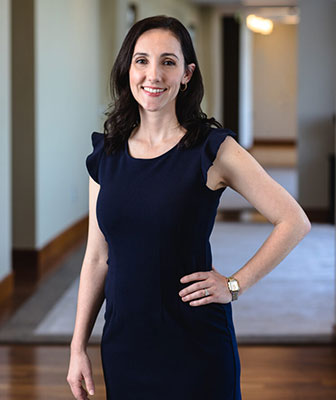
Natalie Dean |
JPBM Communications Award LectureTales from the Front Lines of Pandemic Communications Saturday January 6, 2024, 11:00 a.m.-Noon All of our lives changed in 2020, and I’m no exception. As a biostatistician specializing in emerging infectious disease research, I was eager to contribute to the cause through my work. But a surprise to me was the level of impact I was able to make via public engagement. My communications took many forms, including television, radio and podcast appearances, opinion pieces and editorials, and a lot of talking to reporters. It also included direct engagement with the public via Twitter. I digested new studies and synthesized these with existing findings. I taught others how to interpret results, particularly surrounding vaccine effectiveness. And I advocated for higher quality data. I will talk about my experiences diving into the deep end of communications during the pandemic. I will recall times that were alternately funny, challenging, humbling, unnerving, and incredibly rewarding. I will share some of the most important lessons I’ve learned along the way, and talk about what we stand to gain by fostering communication skills among mathematicians and statisticians. |

Ranthony A. Clark |
NAM Cox-Talbot AddressQuantitative Justice: Intersections of Mathematics and Society Friday January 5, 2024, 7:45 p.m.-8:45 p.m. In this talk, we use a historical lens to consider intersections of mathematics and society. We look internally and externally by considering two perspectives—(1) how society impacts equity within the mathematical community, and (2) how the mathematical community impacts equity within society. With respect to the latter, we focus on one particular external effort—an emergent new field of interdisciplinary research called Quantitative Justice. Quantitative Justice comprises the mathematical, computational, and statistical analysis of real-world problems related to social inequity. In this context, mathematical tools are used to quantify notions of ‘fairness’ in a given domain, generating both new mathematics and impacting society at large. We will give current examples of how math is being used to shift societal systems, and discuss how this research complements historical efforts to improve equity in mathematics by bridging the divide between scholarship and activism. |

Katherine Ensor |
ASA Invited AddressCelebrating Statistical Foundations Driving 21st-Century Innovation Thursday January 4, 2024, 3:30 p.m.-4:30 p.m. Statistical foundations are without question at the core of modern innovation. In today’s economy, a common phrase is "data is the new gold". Certainly, we live in an age where data is large, ubiquitous, and comes in many forms. The contributions from the statistical sciences go beyond "data". We are emerging from a pandemic where statisticians around the globe saved lives by contributing critical understanding to vaccines, treatments, pandemic policies, and management. The contributions are universal - from self-driving cars to Mars rovers, to sustainable and improved infrastructure, to clean energy and environmental stewardship, to financial markets and investing, to advances in medicine and medical practices, and even toward a better understanding of the communities in which we live, work, learn and play. This talk will highlight these important contributions and the innovations they made possible and will look to innovations on the horizon. |

Daniel Erman |
AMS Invited AddressFrom Hilbert to Mirror Symmetry Thursday January 4, 2024, 2:15 p.m.-3:20 p.m. In 1890, Hilbert transformed algebra with a collection of finiteness results. I will discuss what Hilbert’s ideas say about matrices of polynomials, as well as how those ideas have evolved over the decades, through interactions with modern algebraic geometry and, quite recently, through a connection with mirror symmetry. |
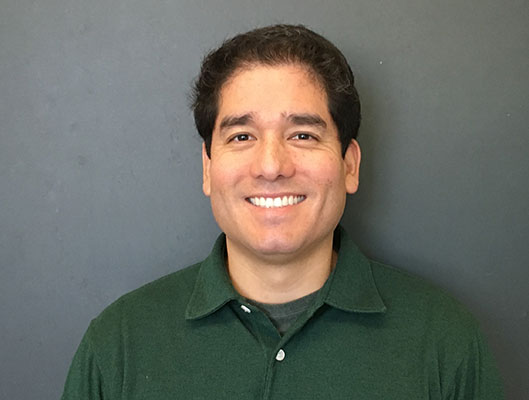
Stephan Ramon Garcia |
ILAS Invited AddressFast Food for Thought: What Can Chicken Nuggets Tell Us About Linear Algebra? Thursday January 4, 2024, 9:45 a.m. - 10:50 a.m. A simple question about chicken nuggets connects everything from analysis and combinatorics to probability theory and computer-aided design. Linear algebra is a recurring theme: determinantal formulas, piecewise-polynomial interpolation, ``random norms'', trace polynomials, and operator algebras all make an appearance. This talk is aimed at a general mathematical audience: students are invited to attend! |

Sylvester James Gates, Jr. |
TPSE Invited AddressWhat Challenges Does Data Science Present to Mathematics Education? Friday January 5, 2024, 11:00 a.m.-12:00 p.m. The importance of data science is increasing so rapidly that mathematically based education is facing a challenge to effectively engage this issue. The presentation will discuss these community challenges. |
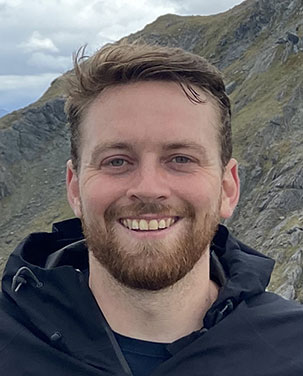
Matthew Harrison-Trainor |
ASL Invited AddressThe Complexity of Classifying Topological Spaces Friday January 5, 2024, 1:00 p.m.-2:00 p.m. Given a topological space, how difficult is it to characterize it up to homeomorphism? The unit interval, for example, is the unique metrizable continuum with exactly two non-cut points. We would like to, first of all, measure the complexity of such a characterization, and second of all, prove that it is best possible. I will talk about these problems both for particular examples and as a more general theory. This is the topological analogue of the theory of Scott sentences and Scott complexity for countable structures. |

Åsa Hirvonen |
ASL Invited AddressGames for Measuring Distances Between Metric Structures Friday January 5, 2024, 9:00 a.m.-10:00 a.m. In classical model theory, Ehrenfeucht-Fraïssé games are used to study similarities between structures. This can, e.g., be applied to prove inexpressibility results (finite games) or for building Scott sentences capturing isomorphism of countable structures (infinite or dynamic games). Several authors have considered Ehrenfeucht-Fraïssé games – or their cousin, back-and-forth systems – on metric structures. In a metric setting new phenomena arise, related to various forms of approximation, both within structures and between structures. In a game setting these show up as approximate answers to moves, and approximate preservation of formulae. It turns out that elementary equivalence up to a given quantifier depth can be subdivided by the accuracy and steepness of preserved formulae. These notions reconstruct the ability to prove inexpressibility results, but also enable capturing new phenomena, such as given distances between models with respect to various natural pseudometrics. |
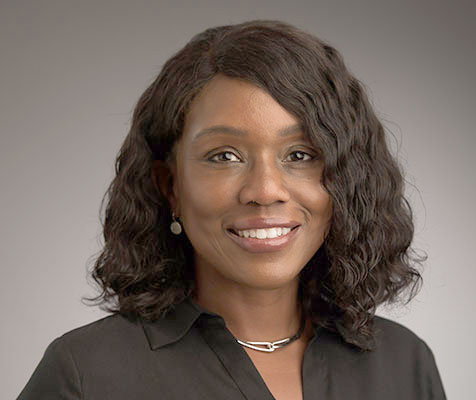
Trachette Jackson |
PME J. Sutherland Frame LectureMobilizing Mathematics for the Fight Against Cancer Friday January 5, 2024, 2:15 p.m.-3:20 p.m. Mathematical oncologists apply mathematical and computational modeling approaches to every aspect of cancer biology, from tumor initiation to malignant spread and treatment response. Using data-driven computational models is a powerful and practical way to investigate the therapeutic potential of novel combinations of various strategies for clinical cancer treatment. This talk will showcase a suite of mathematical models designed to optimize the use of targeted drug treatment strategies in combination with immunotherapy. The goal is to gain a more robust understanding of how specific tumor mutations affect the immune system and ultimately impact the efficacy of combination therapy. Combined with existing and newly generated experimental data, these mathematical models are poised to improve the ability to connect promising drugs for clinical trials and reduce the time and costs associated with transitioning novel therapeutic approaches from "equations to bench to bedside." |

Shelly M. Jones |
NAM Claytor-Woodard AddressChoosing Hope: Teaching Culturally Relevant Mathematics as a Human Endeavor Thursday January 4, 2024, 2:15 p.m.-3:20 p.m. Culturally Relevant Mathematics Pedagogy encompasses a teaching approach that actively involves and empowers students, fostering connections between the subject matter and their personal lives, communities, and the broader world. This presentation offers a vision of how this teaching approach has paved the way for more equitable teaching and learning experiences in K-16 mathematics classrooms. The speaker will emphasize selected instructional strategies from her book, 'Engaging in Culturally Relevant Math Tasks,' illustrating how educators can deliver meaningful mathematical instruction from an asset-based perspective. Participants will have the opportunity to partake in discussions exploring how these strategies relate to their own experiences and to identify how to enhance their current teaching practice. |

Holly Krieger |
Current Events Bulletin Session - Lecture IIIUniformity When Arithmetic Meets Geometry Friday January 5, 2024, 4:00 p.m.-5:00 p.m. In 1983, Faltings proved Mordell's famous 1922 conjecture relating arithmetic to geometry: that for a polynomial equation $f(x,y) = 0$, if the topology of the set of solutions over the complex numbers is sufficiently complicated, then the set of solutions with rational numbers is finite. Once we know a set is finite, natural questions arise: can we compute this finite set? How large can it be? What input data does its size depend on? Recent work of Dimitrov-Gao-Habegger and Kühne have provided a strong and striking answer to this last question, proving what is known as the Uniform Mordell-Lang Conjecture for curves embedded into Jacobians, posed by Mazur in 1986. Here the word `uniform' roughly means that the size bound depends only on the genus of the curve (a measure of the topological complexity of the complex solutions) as well as a notion of algebraic complexity for the field in which we search for points satisfying the polynomial equation. This talk will introduce the history of Mordell's conjecture and highlight the near-century of progress leading to the breakthrough work of Dimitrov-Gao-Habegger and Kühne. Without assuming any background in algebraic geometry or number theory, we will discuss their proofs, some of the applications of their results, and connections with other questions of uniformity in the interactions between arithmetic, algebra, and geometry. |

Yvonne Lai |
MAA Lecture on Teaching and Learning(Why) To Build Bridges in Mathematics Education Thursday January 4, 2024, 11:00 a.m.-12:00 p.m. It can be easy to silo ourselves with those that think "like us". This is the opposite of what we want to do if we want to be better teachers. In this talk, I will use the case of designing courses for prospective high school mathematics teacher to argue for the value of building bridges in mathematics education. Along the way, I will discuss recent work that examines the cost of uncivil discourse in mathematics education. I will conclude with examples and suggestions for bridge building in mathematics teaching, departmental structuring, and writing policy for the mathematical sciences community. |
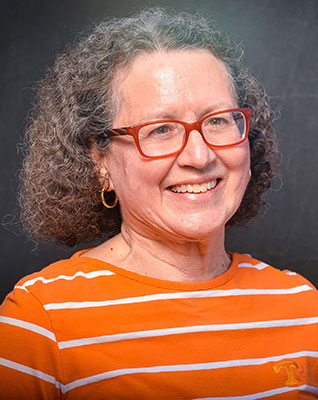
Suzanne Marie Lenhart |
AMS Josiah Willard Gibbs LectureNatural System Management: A Mathematician's Perspective Thursday January 4, 2024, 5:00 p.m.-6:00 p.m. Mathematical modeling can represent the population dynamics of a variety of natural systems. Specific management features can be included directly into the model framework, and model outcomes can suggest the need for external actions further affecting the environment. Models with discrete and continuous time steps, and some spatial features will be presented. In one example, optimal control techniques to design time varying harvest rates of anchovy stock will be illustrated in a food chain system of differential equations for the Turkish coast of the Black Sea, using landing data. In another example, we find the relationship between air temperature and emergence success of hatchlings across multiple nesting seasons to better understand the potential impact of climate change on Loggerhead sea turtle populations. We demonstrate the effect of changing hatchling emergence success on the juvenile and adult populations using a combination of a statistical model and a discrete time model (with two time scales). |

François Loeser |
ASL Invited AddressModel Theory and Non-Archimedean Geometry Saturday January 6, 2024, 9:00 a.m.-10:00 a.m. We shall present an overview of applications of Model Theory of valued fields to Non-Archimedean Geometry. We will start with the Bieri-Groves theorem and then focus on more recent results obtained in collaboration with several coauthors (A. Ducros, E. Hrushovski and J. Ye). |

Toby Meadows |
ASL Invited AddressA Modest Foundational Argument for the Generic Multiverse Saturday January 6, 2024, 1:00 p.m.-2:00 p.m. The generic multiverse is a system of set theoretic universes that is, roughly speaking, closed under the operations of generic extension and its inverse. The underlying idea can be axiomatized and the resultant theory MV might be thought of as a competitor to ZFC. In this talk, I want to make a modest philosophical argument for the value of MV as a foundation for set theory. I’ll start by discussing the way in which ZFC provides a satisfying foundation for almost all of mathematics. I’ll then argue ZFC does not provide a similarly satisfying foundation for contemporary set theory. Finally, I’ll argue that MV can fulfill this role in a very natural manner. |
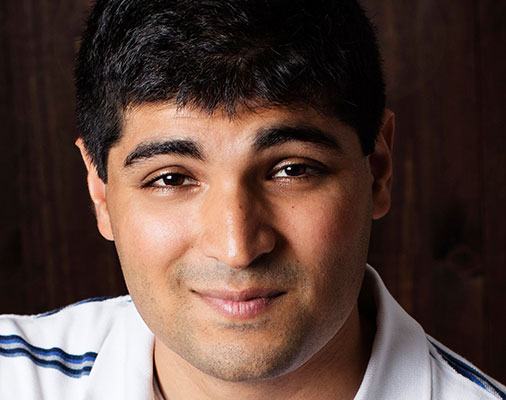
Ankur Moitra |
von Neumann LectureLearning from Dynamics Wednesday January 3, 2024, 9:45 a.m.-10:50 a.m. Linear dynamical systems are the canonical model for time series data. They have wide-ranging applications and there is a vast literature on learning their parameters from input-output sequences. Moreover they have received renewed interest because of their connections to recurrent neural networks. But there are wide gaps in our understanding. Existing works have only asymptotic guarantees or else make restrictive assumptions, e.g. that preclude having any long-range correlations. In this work, we give a new algorithm based on the method of moments that is computationally efficient and works under essentially minimal assumptions. Our work points to several missed connections, whereby tools from theoretical machine learning including tensor methods, can be used in non-stationary settings. |

Hussein Mourtada |
Current Events Bulletin Session - Lecture IIHilbert Meets Ramanujan: Singularity Theory and Integer Partitions Friday January 5, 2024, 3:00 p.m.-4:00 p.m. An integer partition of an integer number n is simply a decreasing sequence of positive integers whose sum is equal to n. Integer partitions are ubiquitous in mathematics. I will report on a link between an algebro-geometric invariant of singularities of algebraic varieties and the theory of integer partitions. This link provides algebro-geometric interpretations of some identities in the theory of partitions that were imagined by Ramanujan and allows one to guess and prove new partition identities. |

Will Perkins |
Current Events Bulletin Session - Lecture ISearching for (Sharp) Thresholds in Random Structures: Where Are We Now? Friday January 5, 2024, 2:00 p.m.-3:00 p.m. Threshold phenomena in random structures are fundamental in several areas of mathematics and computer science. These phenomena include, among many others, percolation in mathematical physics, emergence of structural properties in random graphs in probabilistic combinatorics, and satisfiability of random constraint satisfaction problems in computer science. For several decades, researchers have studied thresholds in random structures both in specific cases and in generality, searching for universal behavior, pinpointing specific thresholds, and even describing scaling windows around certain thresholds. On the occasion of the recent proof of the Kahn-Kalai conjecture by Park and Pham, we survey the current landscape of our understanding of threshold phenomena, describing some recent developments in both the general theory and in specific models. |

Anne Schilling |
AWM-AMS Noether LectureThe Ubiquity of Crystal Bases Thursday January 4, 2024, 9:45 a.m.-10:50 a.m. Crystal bases are combinatorial skeletons of Lie algebra representations. They appeared in the work of Kashiwara, Lusztig and Littelmann on quantum groups and the geometry of flag varieties. Crystal bases arise in many unexpected places, from mathematical physics to probability and number theory. In this talk, I will showcase ten reasons and applications of how crystal theory can be used to solve problems in representation theory, geometry and beyond. |
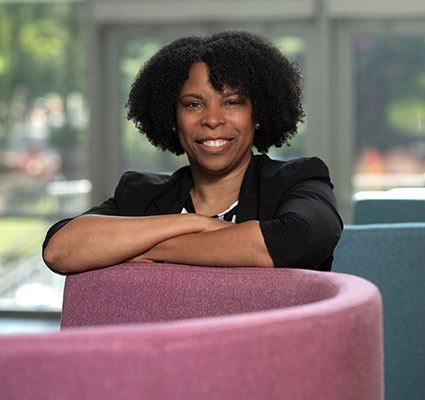
Kimberly Sellers |
AMS Invited AddressDispersed Methods for Handling Dispersed Count Data Thursday January 4, 2023, 3:30 p.m.-4:35 p.m. While the Poisson distribution is a classical statistical model for count data, it hinges on the constraining equi-dispersion property (i.e. that the mean and variance equal). This assumption, however, does not usually hold for real count data; over-dispersion (i.e. when the variance is greater than the mean) is a more common phenomenon for count data, however data under-dispersion has also been prevalent in various settings. It would be more convenient to work with a structure that can effectively model data (over- or under-) dispersion because it can offer more flexibility (and, thus, more appropriate inference) in the statistical methodology. This talk introduces the Conway-Maxwell-Poisson distribution along with several associated statistical methods motivated by this model to better analyze count data under various scenarios (e.g. distributional theory, generalized linear modeling, control chart theory, and count processes). This talk will likewise acquaint the audience with available associated tools for statistical computing. |

Dima Sinapova |
ASL Invited AddressCombinatorial Principles at Successors of Singular Cardinals Friday January 5, 2023, 2:00 p.m.-3:00 p.m. Given a singular cardinal $\kappa$, mutual stationarity asserts that sequences of stationary subsets of regular cardinals with limit $\kappa$ have a “simultaneous witness” for their stationarity. This was first defined by Foreman and Magidor in 2001, who showed it holds when restricted to points of $\omega$. The case for higher cofinalities remained open until a few years ago Ben Neria showed its consistency from large cardinals. In Ben Neria’s model SCH naturally holds at $\aleph_\omega$. We show that we can obtain mutual stationarity at $\langle\aleph_n|n<\omega\rangle$ for any fixed cofinality together with the failure of SCH at $\aleph_\omega$ (joint with Will Adkisson). Then we will discuss what this means for various combinatorial principles at $\aleph_{\omega+1}$. |

Sławomir Solecki |
ASL Invited AddressDescriptive Set Theory and Generic Measure Preserving Transformations Friday January 5, 2024, 10:00 a.m.-11:00 a.m. One of the areas of interest of Descriptive Set Theory is dynamics of Polish groups, that is, groups carrying a group topology that is separable and completely metrizable. Such groups are not, in general, locally compact. Therefore, in studying their dynamics, classical methods relying on Haar measure are not available. These methods can sometimes be replaced by descriptive set theoretic tools. I will describe how the descriptive set theoretic point of view led to a recent answer to an old question in Ergodic Theory. The question lies within a long-established theme, going back to the work of Halmos and Rokhlin, of investigating generic measure preserving transformations. The answer to the question rests on an analysis of unitary representations of a certain non-locally compact Polish group that can be viewed as an infinite dimensional torus. |

Terence Tao |
AMS Colloquium Lecture IMachine Assisted Proof Wednesday January 3, 2024, 1:00 p.m.-2:00 p.m. For centuries, mathematicians have relied on computers to perform calculations, to suggest conjectures, and as components of mathematical proofs. In the light of more modern tools such as interactive theorem provers, machine learning algorithms, and generative AI, we are beginning to see machines used in more creative and substantive ways in our work. In this talk we survey some historical and recent developments, and speculate on the future roles of machine assistance in mathematics. |
AMS Colloquium Lecture IITranslational Tilings of Euclidean space Thursday January 4, 2024, 1:00 p.m.-2:00 p.m. Translational tilings of Euclidean space are a partition of Euclidean space (up to null sets) by translates of one or more tiles. For instance, the famous Penrose tilings are a translational tiling by a finite number of triangles which can only tile the plane non-periodically. One of the outstanding problems in this field is the "periodic tiling conjecture" - if a tile can tile space by translations, must there exist a way to tile space periodically with this tile? Recently, Rachel Greenfeld and I were able to disprove this conjecture in high dimensions, by encoding a certain "Sudoku puzzle" as a tiling problem. We survey this result and other recent progress in this talk. |
|
AMS Colloquium Lecture IIICorrelations of Multiplicative Functions Friday January 5, 2024, 1:00 p.m.-2:00 p.m. The Liouville function assigns a sign to each natural number: +1 if the number is the product of an even number of primes, and -1 if the number is the product of an odd number of primes. A famous conjecture of Chowla asserts consecutive values of the Liouville function are asymptotically uncorrelated to each other; this can be viewed as a simplified analog of the twin prime conjecture. This conjecture is still open today, but significant progress has been made towards it; while we still cannot quite detect cancellations in the Liouville function at small enough scales to imply the Chowla conjecture, we have been able to see such cancellations in slightly larger scales. Nevertheless, there still appears to be a key ingredient missing to complete the story. We survey some of the recent developments in this area. |
|
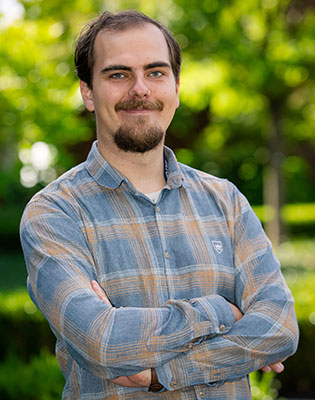
Joni Teräväinen |
AIM Alexanderson Award LectureUniformity of the Mobius Function in Short Intervals Thursday January 4, 2024, 11:00 a.m.-12:00 p.m. In this talk, I will discuss the short interval distribution of the Möbius function. The Möbius function is expected to behave randomly in short intervals, and one way to formalize this is to assert that its Gowers uniformity norms are small over such intervals. I will explain what this notion means and what are some of its implications. I will then discuss joint work with Kaisa Matomäki, Maksym Radziwiłł, Terence Tao and Tamar Ziegler where we showed that the Möbius function is indeed Gowers uniform in almost all short intervals of polynomial length. I will also mention some applications related to Chowla’s conjecture and some further progress made on this topic. |

John Urschel |
AMS Erdős Lecture for StudentsFrom Moments to Matrices Wednesday January 3, 2024, 11:00 a.m.-12:00 p.m. More than a hundred years ago, Chebyshev posed the following problem: "Given the length, weight, position of mass centre and moment of inertia of a material straight line with an unknown density... find the narrowest possible limits for the weight of any segment of the line." This is one of the earliest examples of a moment problem, the task of obtaining information about a measure from some sequence of its moments. In this talk, we will explore the classical moment problems of the late 19th and early 20th centuries and how they laid the groundwork for fundamental concepts and techniques in numerical analysis and numerical linear algebra. |
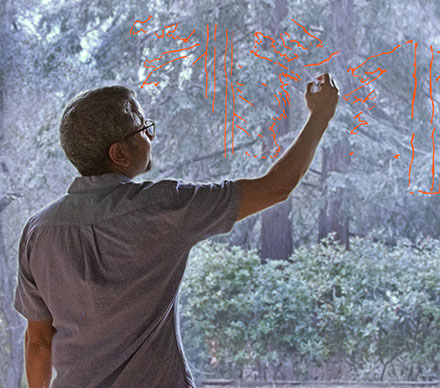
Ravi Vakil |
Current Events Bulletin Session - Lecture IV
|

Mariel Vazquez |
SIAM Invited AddressTopological Considerations in Genome Biology Friday January 5, 2024, 11:00 a.m.-12:00 p.m. Living organisms and some viruses carry their genetic code in very long, tightly packaged, DNA molecules. Understanding the geometry and topology of DNA is key to understanding the mechanisms of viral infection and the inner workings of a cell. We study the changes in DNA topology mediated by essential processes such as DNA packing and transcription of DNA into RNA. These processes are highly regulated, and even small structural changes can lead to catastrophic effects. We use a variety of techniques from knot theory and low-dimensional topology, aided by discrete methods and computational tools, to analyze molecular biology data produced by us and by our collaborators. In this lecture I discuss DNA packaging in viruses and the formation and entanglement of DNA:RNA hybrids that arise during transcription. The presentation is accessible to students and suitable for a diverse interdisciplinary audience. |
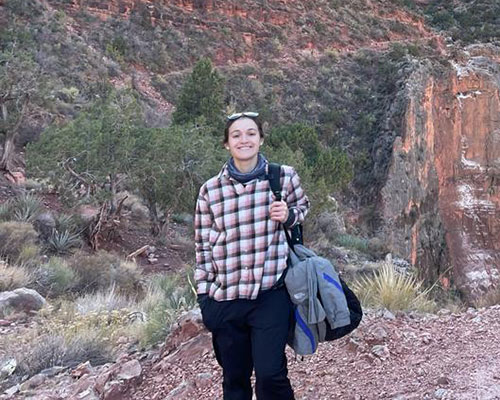
Mariana Vicaria |
ASL Invited AddressModel Theory of Valued Fields Saturday January 6, 2024, 10:00 a.m.-11:00 a.m. Model theory is a branch of mathematical logic that studies structures (that is sets equipped with relations, functions and constants) and their definable sets. There is a more general class of subsets that one could study, called the interpretable sets, obtained by taking the quotient of a definable set by a definable equivalence relation. A natural question is: given a structure can one classify the interpretable sets in that structure? A valued field is a field $K$ equipped with a distinguished subset $\mathcal{O}$, a valuation ring. Examples of valued fields are the $p$-adic field $\mathbb{Q}_{p}$ or the Laurent series over the complex numbers $\mathbb{C}((t))$. Given $\mathcal{O}$ a valuation ring of a field and $\mathcal{M}$ its maximal ideal, we commonly refer to the additive quotient $\mathcal{O}/\mathcal{M}$ as the residue field, while the multiplicative quotient $K^{\times}/\mathcal{O}^{\times}$ is an ordered abelian group and it is called the value group. One of the most striking results in the model theory of valued fields is the Ax-Kochen/ Ershov theorem which roughly states that the first order theory of an unramified henselian valued field is completely determined by the first order theory of its residue field and its value group. A principle follows from this theorem: the model theory of valued field is controlled by its residue field and its value group. In this talk I will make a brief description of valued fields and their model theory. I'll present how the problem of classifying interpretable sets in henselian valued fields can be approached in an Ax-Kochen style: What obstructions come from the residue field? and from the value group? I will conclude presenting the classification of the interpretable sets in valued fields obtained in joint work with Rideau-Kikuchi, building on \cite{AKE-res} and \cite{AKE-vg}.
|
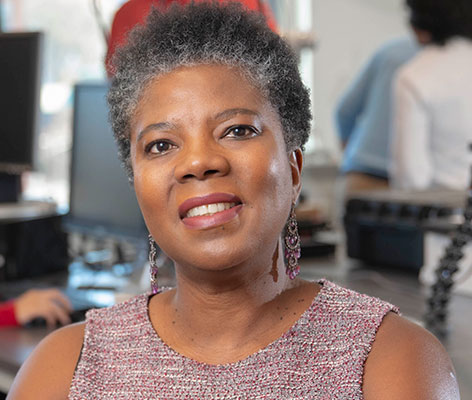
Suzanne L. Weekes |
AMS Lecture on EducationMathematics in (and for) the Real World Saturday January 6, 2024, 9:45 a.m.-10:50 a.m. Work to prepare for complex futures is timely, given the recent, global examples of extreme weather, clean energy and its role in energy security, the global pandemic, and supply chain challenges. There is a need to ensure that students in all majors eventually develop an increased awareness of these problems through interdisciplinary courses and project work so they understand their role as a citizen and professional, and have the capacity and skills to develop and contribute to solutions. This statement is from the report of the SIAM Convening on Climate Science, Sustainability, and Clean Energy which is available at https://siam.org/publications/reports. In this talk, we consider opportunities to engage and prepare mathematical sciences students to solve real-world problems and real problems facing the world. |
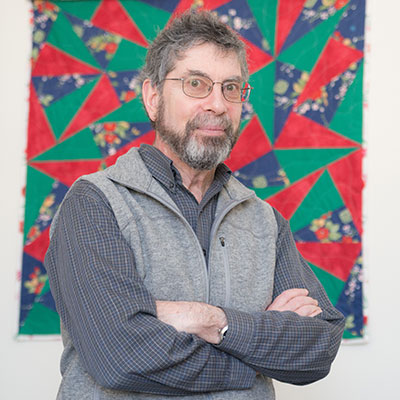
Peter Winkler |
AAAS-AMS Invited AddressPermutons Friday January 5, 2024, 4:45 p.m.-5:50 p.m. Permutons are probability distributions on the unit square with uniform marginals. Like graphons (for graphs), permutons are limit structures for permutations, and with the help of a variational principle, can tell us much about what large random permutations look like. We’ll give an overview of what’s happening in the permuton world, including the emergence of random permutons, the question of what sets can support a permuton, and some of the many intriguing open problems. |
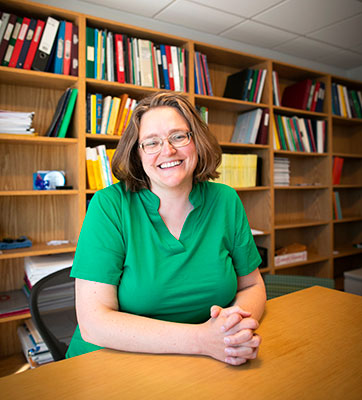
Melanie Matchett Wood |
AMS Maryam Mirzakhani LectureAn Application of Probability Theory for Group to 3-Dimensional Manifolds Friday January 5, 2024, 3:30 p.m.-4:35 p.m. The fundamental group of a 3-dimensional manifold captures information about loops in the manifold. One naturally asks what kind of groups are possible as the fundamental groups of 3-manifolds. For any finite group $G$, it is well-known that there exists a 3-manifold $M$ with $G$ as a quotient of the fundamental group of $M$. However, we can ask more detailed questions about the possible finite quotients, e.g. for $G$ and $H$ finite groups, does there exist a 3-manifold group with $G$ as a quotient but not $H$ as a quotient? We answer all such questions. To prove existence of 3-manifolds with certain finite quotients but not others, we use a probabilistic method, by first proving a formula for the distribution of the fundamental group of a random 3-manifold, in the sense of Dunfield-Thurston. This formula comes from our recent work on the moment problem for random groups. This is joint work with Will Sawin. |

Kamuela E. Yong |
MAA-SIAM-AMS Hrabowski-Gates-Tapia-McBay LectureWhen Mathematicians Don't Count Friday January 5, 2024, 9:00 a.m.-10:00 a.m. A systemic issue of Indigenous invisibility within the mathematical community persists, rooted in practices that obscure Indigenous individuals in demographic data. Whether through aggregation with broader groups, categorization as "other," or complete omission due to identifiability concerns, they remain statistically invisible. This not only impedes accurate representation but also perpetuates the false narrative that mathematics is devoid of Indigenous presence. Simultaneously, Indigenous voices remain critically absent within educational spaces. In this talk, I will not only address these challenges but also share our ongoing efforts to build a thriving community of Indigenous mathematicians. Furthermore, I will discuss my personal journey in transforming my curriculum, infusing it with examples of ancestral knowledge and Indigenous perspectives integrated into mathematical concepts. By shedding light on these issues and offering actionable strategies for change, this presentation seeks to inspire hope and promote a more inclusive and welcoming environment for Indigenous individuals within the mathematical community. |




